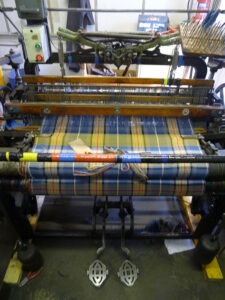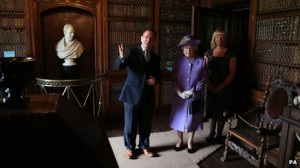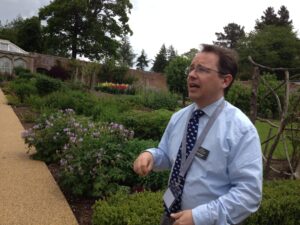Writing a Novel? The Details Count…
July 22, 2013 by ciji · 5 Comments
 Anyone who has not actually “gone the distance” writing a novel might imagine that authors sit home and conjure what’s on the page of their works-in-progress out of thin air.
Anyone who has not actually “gone the distance” writing a novel might imagine that authors sit home and conjure what’s on the page of their works-in-progress out of thin air.
Well, perhaps some do–and Internet search capability has certainly made fact-checking a lot easier these days–but for me, the reality of creating fiction…even contemporary fiction…demands a fair amount of legwork.
Take my most recent trip to Scotland to prepare to write a contemporary sequel to my eighteenth century historical, Island of the Swans that was first published in 1989. The new novel, That Autumn in Edinburgh, takes place 250 years after the original book ends. The back-story has to do with the textile weaving industry for which Scotland is justly renowned. For me, as a former reporter for ABC TV and Radio in Los Angeles for more years than I like to admit, there is simply no way to learn about an industry other than to go there and see for myself.
 So, first stop on my recent research trip was Floors Castle near Kelso to see the wonderful fabrics used in so many of the fabulously furnished rooms in this ancestral home built for the 1st Duke of Roxburghe in 1721.
So, first stop on my recent research trip was Floors Castle near Kelso to see the wonderful fabrics used in so many of the fabulously furnished rooms in this ancestral home built for the 1st Duke of Roxburghe in 1721.
 The Flemish Gobelins tapestries came to Floors Castle via the American Heiress Mary Goelet, “Duchess May,” who married the 8th Duke of Roxburghe and literally plastered the walls with these beautiful hangings her family had imported from Belgium to Newport, Rhode Island, and then brought back to Scotland. I wanted to see for myself how these grand Scottish houses were furnished–and with what textiles.
The Flemish Gobelins tapestries came to Floors Castle via the American Heiress Mary Goelet, “Duchess May,” who married the 8th Duke of Roxburghe and literally plastered the walls with these beautiful hangings her family had imported from Belgium to Newport, Rhode Island, and then brought back to Scotland. I wanted to see for myself how these grand Scottish houses were furnished–and with what textiles.
 To be sure, I saw plenty of exquisite silks, satins and brocades, but where were the wonderful Scottish tartans and tweeds that so often decorated the hunting lodges and castles in Scotland? And most of all, I wanted to see the manufacturing mills.
To be sure, I saw plenty of exquisite silks, satins and brocades, but where were the wonderful Scottish tartans and tweeds that so often decorated the hunting lodges and castles in Scotland? And most of all, I wanted to see the manufacturing mills.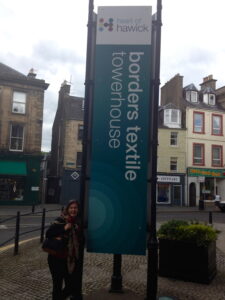
Well, off to Borders Textile Towerhouse museum in Hawick I went to get an initial introduction to the world of weaving. There I gained a solid grasp of Scotland’s proud industrial past as well as learned about the process of making wool fabrics from shearing, carding, dyeing, and spinning the wool before the process of weaving or knitting is begun, and then finishing the end product–whether a kilt or cashmere sweater.
 Next stop: Johnstons of Elgin, St. Andrews, and Hawick. Since I was already in Hawick, I talked my way into a tour at the Cashmere Visitor Centre where a very informative young woman took me through the plant and explained how modern technology was being married to ancient practices to make the finest and most luxurious woolen products in the world.
Next stop: Johnstons of Elgin, St. Andrews, and Hawick. Since I was already in Hawick, I talked my way into a tour at the Cashmere Visitor Centre where a very informative young woman took me through the plant and explained how modern technology was being married to ancient practices to make the finest and most luxurious woolen products in the world.
In nearby Selkirk, I made an appointment to have a private tour at one of the largest mills remaining in Scotland, although the general public is welcome to sign up for “The Lochcarron Experience” when in the Scottish Borders, south of Edinburgh.
 Designer Leah Robertson gave up an entire morning to give me a thorough grounding in her world. She generously did this just a few days before she was due to fly to New York to meet with clients whose names you’d recognize and display to these buyers the beautiful fabrics made at the enormous plant in Selkirk, just up the road from Johnstons.
Designer Leah Robertson gave up an entire morning to give me a thorough grounding in her world. She generously did this just a few days before she was due to fly to New York to meet with clients whose names you’d recognize and display to these buyers the beautiful fabrics made at the enormous plant in Selkirk, just up the road from Johnstons.
Leah explained the process of making tartan from the stage of either following an ancient pattern of a vintage plaid like that of the MacDonald’s, to the newest tartans, such as one designed in the late Princess Diana’s honor.
 The week before, when I was in Edinburgh, I’d heard that the nearly one hundred-year-old-company had just been bought by a corporation based in South Korea. Here was a story facing so many legacy firms in Scotland unfolding right before my eyes: old-line companies being purchased by global operators–mostly from the Far East.
The week before, when I was in Edinburgh, I’d heard that the nearly one hundred-year-old-company had just been bought by a corporation based in South Korea. Here was a story facing so many legacy firms in Scotland unfolding right before my eyes: old-line companies being purchased by global operators–mostly from the Far East.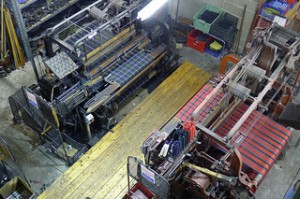
The fear always is that eventually, entire operations in Scotland might be moved out of the country, once the foreign purchasing company learned all the “tricks of the trade.” I’d already seen labels in Italy that read “Designed in Italy”–but the items were actually made in China, Thailand, or Malaysia. So far, however, Lochcarron goods continue to be made in Scotland.
 Suddenly, I had my “back story,” which would be about a small, traditional family tartan mill in Scotland struggling to stay alive in the face of global competition and the need for modernization. A young Scottish-American designer would discover that she and the scion of an old-line Scottish textile company have some very interesting ancestors in common and…
Suddenly, I had my “back story,” which would be about a small, traditional family tartan mill in Scotland struggling to stay alive in the face of global competition and the need for modernization. A young Scottish-American designer would discover that she and the scion of an old-line Scottish textile company have some very interesting ancestors in common and…
Well, you’ll just have to wait for the novel after That Summer in Cornwall to be finished later this year to find out what happens next! However, my evolving notion about the Scottish part of the story seemed an even better idea when I visited DC Dalgliesh, the last textile mill on my research list.
Founded in 1947, D.C. Dalgliesh had recently been purchased by a Scottish entrepreneur named Dr. Nick Fiddes who has big plans for the little operation in Selkirk. His manager, Christine Payne, kindly showed us around, pointing out the treadle looms that had once been powered by foot, later electrified, and now in need of continuing maintenance.
 All these small but cascading factlets are the kind an author simply cannot find merely by putting subjects in the Search box.
All these small but cascading factlets are the kind an author simply cannot find merely by putting subjects in the Search box.
And when it comes to writing convincingly–whether fact or fiction–in my world, the details do matter. It’s a compact I make with my reader: If you buy my books, I’ll try my best to get the facts right.

